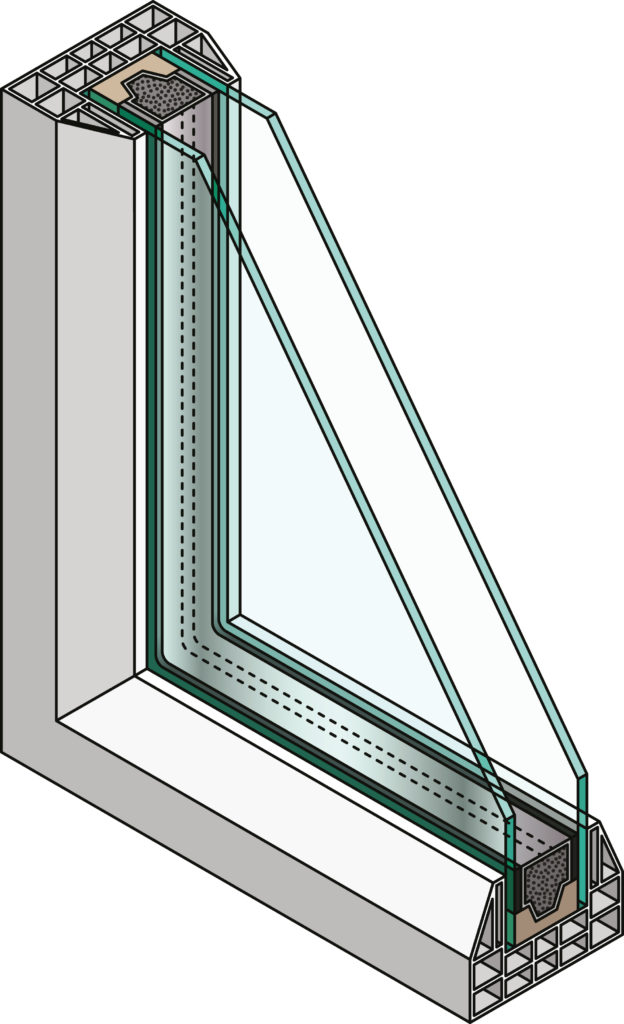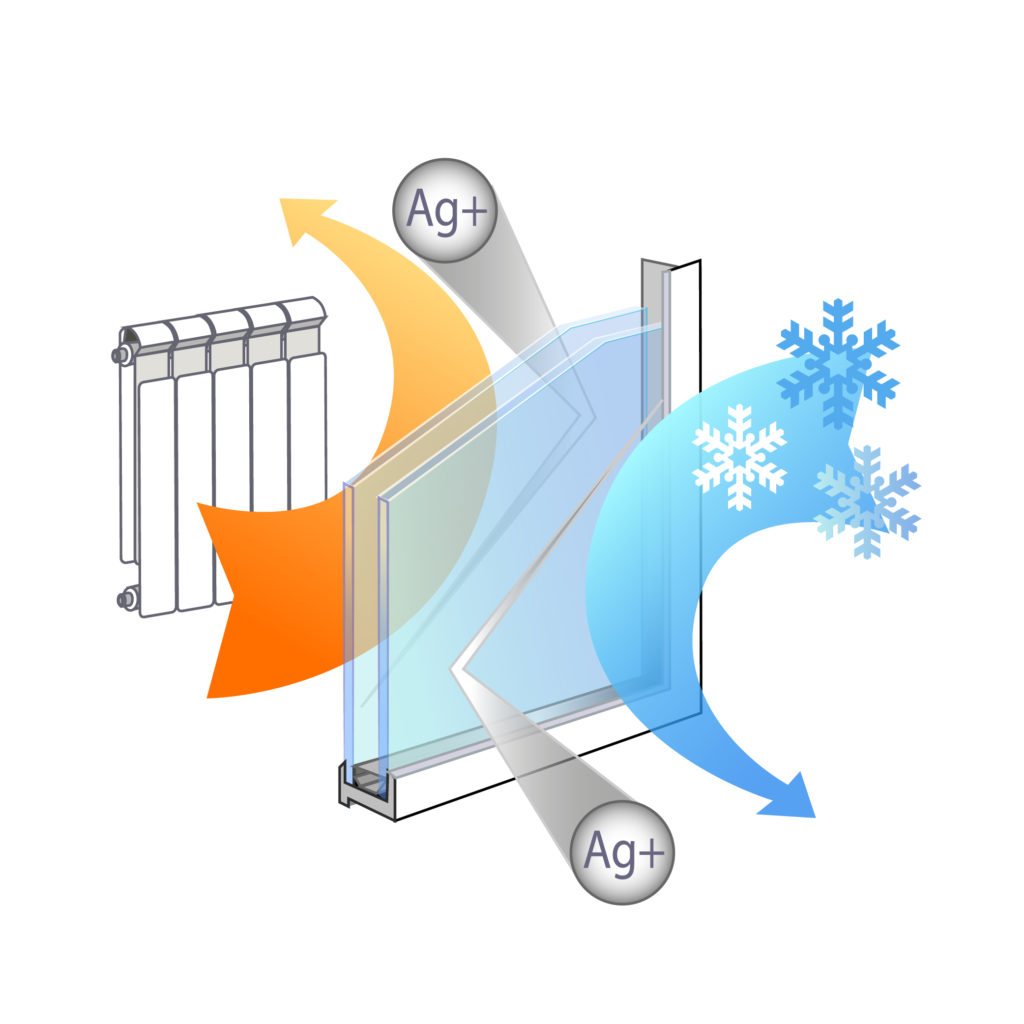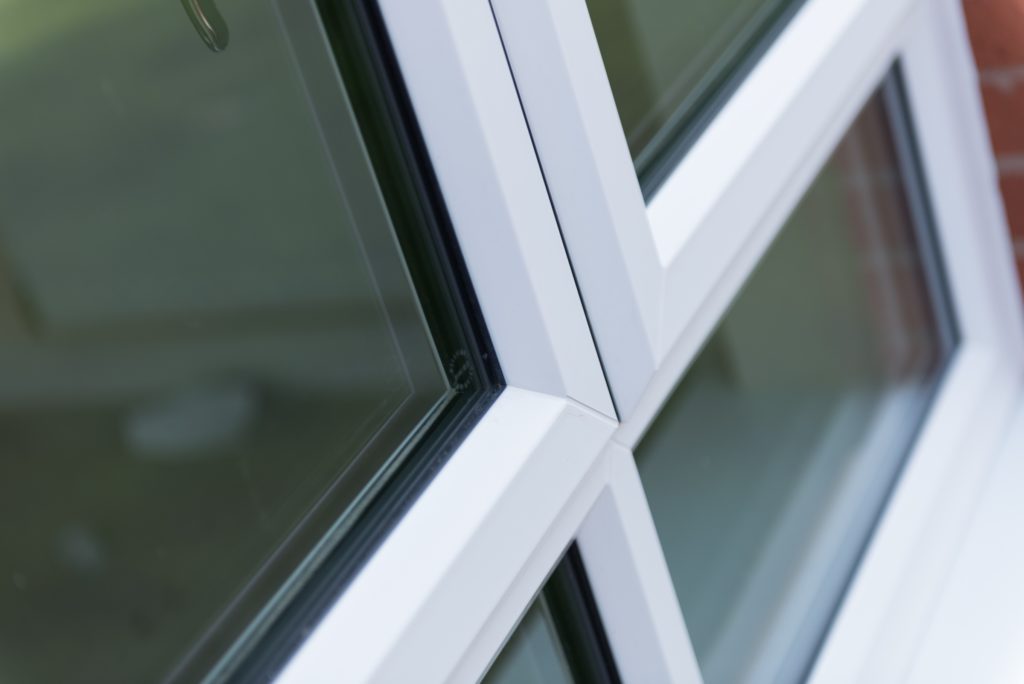 Double glazing is more energy-efficient than single glazing, it reduces noise more effectively and it’s more secure, but how does it actually work?
Double glazing is more energy-efficient than single glazing, it reduces noise more effectively and it’s more secure, but how does it actually work?
Sealed unit, double-glazed windows are made up of two panes of glass separated by a spacer bar around the outside, creating a layer of air or, more recently, Argon gas in the gap. Even more than the glass itself, this layer is the most important part of the insulating process.
1. Glass is actually a conductor of heat
On its own, a single glass window pane, like those that you’d find in a single glazed window, is an excellent conductor of heat. That means that if the temperature on one side of the glass is lower than the temperature on the other, heat will travel through the glass from the warmer side to the colder.
In practice, this means that the warmth from a room that you’re spending money and energy to heat travels through the glass, where it’s wasted on the outside air.
2. Using gas as an insulator
Because glass is such a good conductor, it’s not actually the introduction of the second pane that reduces heat loss significantly. Instead, it’s the layer of gas trapped between the panes that acts as an insulating barrier. The insulating properties of gases are fundamental to how double glazing works.
Traditionally, the gas sealed between the panes has simply been air. These double glazed windows trap heat in much the same way that a layer of woollen clothing traps heat next to your skin. Air is a much better insulator than glass, and can cut your heat loss noticeably.
However, argon gas has just 67% of the conductivity of air, making it even better at retaining heat. That’s why many modern double glazed window manufacturers, including KLG Rutland, choose to supply the improved insulation that Argon offers, along with super energy-efficient low emissivity glass. This has an invisible silver coating which dramatically reduces heat transfer and reflects interior heat back into your room.

3. Minimising conductivity elsewhere
While the gas layer between the panes is a good insulator, traditional double glazing still loses heat through conduction. In older windows, aluminium spacers were placed between the panes of glass to seal the unit, but metal spacers actually conduct heat between the two panes. These spacers allow warmth to travel from the inner pane to the outer even if it struggles to get through the layer of air or argon, preventing older double glazing from working effectively.
However, this problem is eliminated by newer double glazing styles that you can buy from innovative manufacturers like KLG Rutland. These improved windows make use of Warm Edge technology, which uses insulating plastic spacers instead of aluminium. Composite plastic spacers form another barrier to any heat that tries to pass through the window, creating a complete layer of insulation between the panes.

Making your home warmer and safer
So how does double glazing work? It has very little to do with the extra pane of glass: it’s all in the insulating layer of gas and the spacers between the panes. The better the technology of that insulation is – argon and plastic instead of air and aluminium – the better your windows will be at retaining heat.
There are also noise reduction and security benefits to having two panes of glass instead of one; double glazing is really an all-round upgrade. Find out more about it and the other windows we sell in our windows FAQ.
Home → Windows → Windows FAQs → How does double glazing work?


